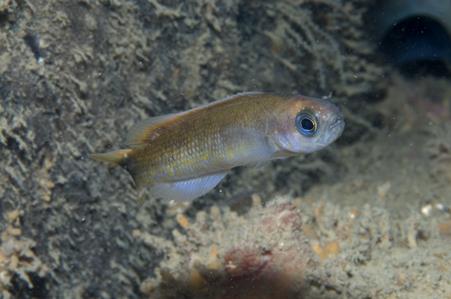General Description
Body very long, slender, with long rays projecting from the tail, a blunt head, and a low, long-based dorsal fin. Pinkish-brown, pale below, with a large black blotch at the tail base and bright blue eyes. To 15 cm.
Biology
These fishes form small to very large schools near caves and ledges, and under jetties and piers, feeding on zooplankton in the water column. Their common name is derived from the behaviour of constantly flicking their tails, resembling the skirts of hula dancers.
Habitat
Sheltered coastal reefs and rocky areas in bays and estuaries, in depths of 1-35 m.
Reefs
Distribution guide
South-eastern Australia, including western and central Victoria.
Species Group
Fishes › Blue devils and hulafishes
Depth
Shallow (1-30 m)
Deep ( > 30 m)
Water Column
Max Size
15 cm
Diet
Omnivore
Commercial Species
No
Global Dispersal
Native to Australia
Conservation Status
- DSE Advisory List : Not listed
- EPBC Act 1999 : Not listed
- IUCN Red List : Not listed







